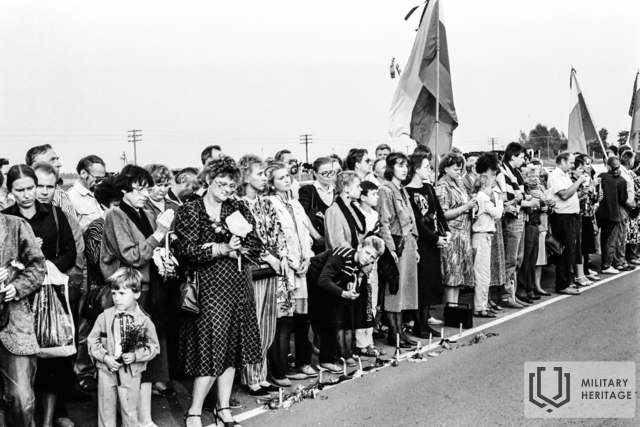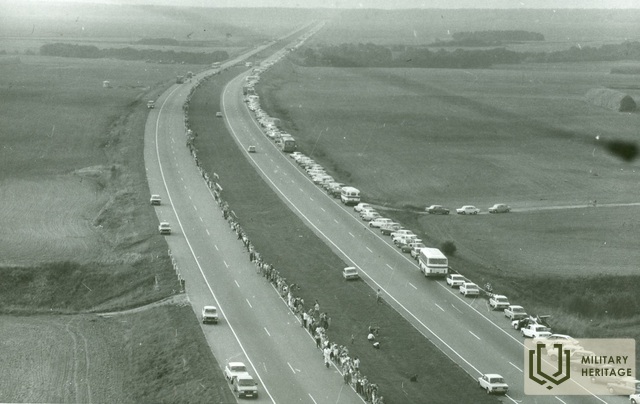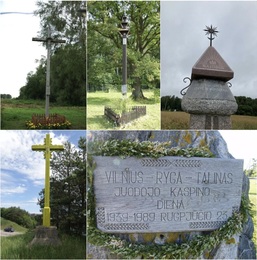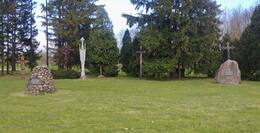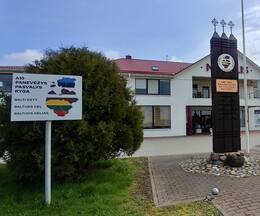Baltijos kelias: atminčiai ir studijoms
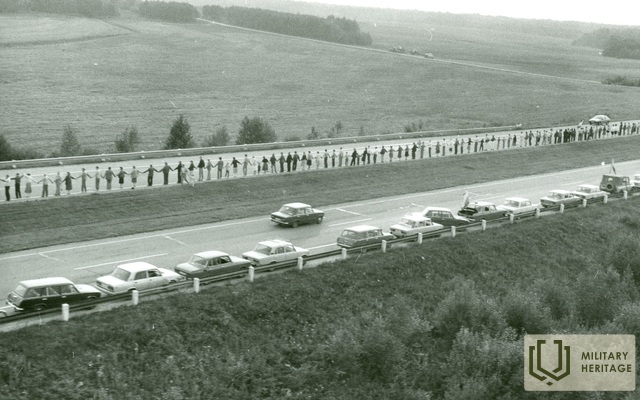
1989 m. įvykęs Baltijos kelias, net ir prabėgus daugiau nei 30 metų po įvykio, nestokoja dėmesio. Statomi nauji paminklai, rengiami minėjimai ir parodos. Viena iš iniciatyvų – Baltijos kelio dokumentinio paveldo įtraukimas į UNESCO Pasaulio atminties tarptautinį registrą.
1989 m. įvykusio Baltijos kelio atmintis yra puoselėjama pačiomis įvairiausiomis formomis: išsaugomi ir atkuriami palei šio kelio tasą 1989 m. pastatyti paminklai, statomi nauji paminklai ir kiti atminties ženklai, kuriamos muziejų ekspozicijos ir parodos, organizuojami minėjimai ir kt. Vienas iš pavyzdžių, 2010 m. Vilniuje visuomenės iniciatyva ir už visuomenės suaukotas lėšas pastatytas paminklas „Laisvės kelias“. Kaip apibūdina jo iniciatoriai, „Laisvės kelias“ – tai skulptūra, skirta Lietuvos valstybės atkūrimo dvidešimtmečiui ir kviečianti visus Lietuvos gyventojus ir patriotus tęsti laisvės ir vienybės kelią. Tai raginimas nepamiršti vienybės idėjų, padėjusių Lietuvai išsikovoti laisvę. Skulptūra simbolizuoja gyvą žmonių grandinę, sujungusią tris nepriklausomybės siekusias Baltijos valstybes. Skulptūra sukurta iš daugiau nei 20 000 vardinių plytų, jos ilgis siekia apie 63 metrus, aukštis – apie 3,5 metro.
2009 m. su Baltijos kelio istorija ir atmintimi susijęs dokumentinis paveldas buvo įtrauktas į UNESCO Pasaulio atminties tarptautinį registrą. Paraišką nominacijai „Baltijos kelias – žmonių grandinė, sujungusi tris valstybes laisvės vardan“ (“The Baltic Way – Human Chain Linking Three States in Their Drive for Freedom”) rengė ir dokumentus teikė Lietuvos, Latvijos ir Estijos kultūros ministerijos, nacionaliniai archyvai ir bibliotekos, nacionaliniai komitetai „Pasaulio atmintis“ ir nacionalinės UNESCO komisijos, Lietuvos istorijos institutas, Latvijos tautos fronto muziejus ir Estijos okupacijos muziejus bei kitos institucijos.
Baltijos kelio dokumentinio paveldo sklaidai sukurta informacinė interneto svetainė – www.balticway.net.
2014 m. Baltijos kelio 25-mečio proga ir įgyvendinant projektą „Baltijos kelio pasakojimai“ sukurta dar viena interneto svetainė – https://www.thebalticway.eu/en/. Buvo surinkta 920 pasakojimų iš daugiau nei 20 pasaulio šalių. Projekto medžiaga perduota saugoti Lietuvos centriniam valstybės archyvui, Latvijos nacionaliniam istorijos muziejui ir Estijos okupacijos muziejui.
- The Baltic Way, 2021, prieiga internetu: https://www.thebalticway.eu/en/.
- The Baltic Way – Human Chain Linking Three States in Their Drive for Freedom. 23 August 1989, 2008, prieiga internetu: https://www.balticway.net/.
- Baltijos kelias. Laisvės kelias, 2010, prieiga internetu: https://laisveskelias.lt/.
- „Baltijos kelias – žmonių grandinė, sujungusi tris valstybes laisvės vardan“, in: Lietuvos nacionalinė UNESCO komisija, 2012–2023, prieiga internetu: https://unesco.lt/komunikacija-ir-informacija/unesco-programa-pasaulio-atmintis/unesco-tarptautinis-registras-pasaulio-atmintis/baltijos-kelias-zmoniu-grandine-sujungusi-tris-valstybes-laisves-vardan.
- „UNESCO tarptautinis registras „Pasaulio atmintis““, in: Lietuvos nacionalinė UNESCO komisija, 2012–2023, prieiga internetu: https://unesco.lt/komunikacija-ir-informacija/unesco-programa-pasaulio-atmintis/unesco-tarptautinis-registras-pasaulio-atmintis.
Related objects
Monuments along the Baltic Way section to commemorate the Baltic Way
Along the Baltic Road from Vilnius to Škilinpamūšis.
On August 23, 1989, to commemorate the 50th anniversary of the signing of the criminal Molotov-Ribbentrop Pact and its secret protocols, a human chain was formed by the Lithuanian Reorganization Movement, the Latvian People's Front, and the Estonian People's Front, connecting the capitals of the three Baltic states – Vilnius, Riga, and Tallinn. 2 million people joined hands in a chain about 650 km long. This chain, known as the Baltic Way, is one of the most striking and memorable events in the Soviet-occupied countries' quest for independence.
The Baltic Way was for some time listed in the Guinness Book of World Records as the longest human chain, and the documentary heritage testifying to this event was included in the UNESCO International Register “Memory of the World”. However, alongside these global and international forms of commemoration, there are also more modest, but no less eloquent, forms. In Lithuania, signs dedicated to its memory have been erected along the entire Baltic Way (the road ran along the Vilnius–Ukmergė–Panevėžys–Pasvalys section). In the Pasvalys district alone, there are 12 such signs of memory today – monuments made of various materials and in various forms. And there are several dozen of them along the entire section. The monuments were erected on the initiative of the Baltic Way participants themselves.
The Baltic Way in Lithuania began in Vilnius from the Gediminas Castle Tower. Today, this starting point is marked by a medallion embedded in the castle stone. And in the Šeškinė microdistrict of Vilnius (along the Ukmergė highway, at Ukmergės g. 24) there is a wooden monument in the form of a chapel pillar, which can be considered the symbolic beginning of the marked path. Its symbolic end is the sign of the connection of the Lithuanian and Latvian sections of the Baltic Way, located 200 km away near Saločiai.
Cross Valley to Commemorate the Baltic Way
The Cross Valley to Commemorate the Baltic Way memorial is located on the eastern outskirts of Pasvalys on the Via Baltica motorway (E67, A10).
On 23 August 1989, to commemorate the occasion of the 50th anniversary of the signing of the criminal Molotov-Ribbentrop Pact and its secret protocol, based on the initiative of the Lithuanian reform movement “Sąjūdis”, the Latvian People’s Front and the Estonian People’s Front, a live human chain linked the capitals of the three Baltic states – Vilnius, Riga and Tallinn. Holding hands, approximately two million people joined together in a living chain that was about 650 km long. This chain, known as the Baltic Way, is one of the most remarkable and memorable events on the road to independence of the countries occupied
by the Soviets.
To commemorate this event, memorial signs have been erected along the Baltic Way route (Vilnius-Ukmergė-Panevėžys- Pasvalys-Saločiai). The Cross Valley to Commemorate the Baltic Way is one of the monuments dedicated to this memorial route. The history of Cross Valley began on the eve of the Baltic Way when the residents of Pasvalys started using boulders to build the Altar of Freedom. On 23 August, the crosses were installed in the valley by the participants of the Baltic Way from Pasvalys, Akmene, Joniškis, Kretinga, Mosėdis, and Pakruojis. Later, crosses were erected to commemorate important events and
people of note, as well as crosses dedicated to the friendly Norwegian and Swedish people.
Memorial Sign of the Lithuanian and Latvian Section of the Baltic Way
The memorial sign is located north of Škilinpamūšis, on the Via Baltica motorway (E67, A10), next to the Latvian border, on the right side of the motorway.
On 23 August 1989, the three Baltic nations – Lithuanians, Latvians and Estonians – united in a historic event called the Baltic Way. On this day, to commemorate the 50th anniversary of the Molotov-Ribbentrop Pact and its secret protocol, a spectacular non-violent resistance event was organised. Approximately two million people joined hands to form a human chain that stretched for 650 kilometres from Vilnius through Riga to Tallinn. The Baltic Way has become not only a symbol of solidarity but also a powerful message to the world about the determination of the Baltic states to regain their independence.
One of the most important monuments commemorating the event is the memorial sign on the Lithuanian-Latvian border, which was erected in 2014 based on the initiative of the members of the Lithuanian reform movement “Sąjūdis” and the organisers of the 1989 Baltic Way.




